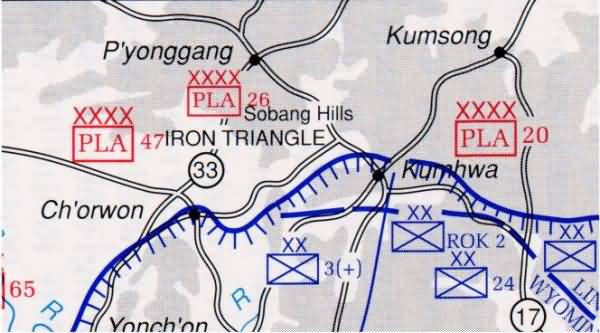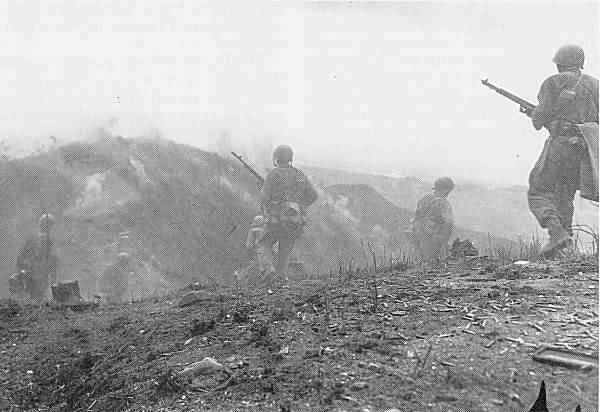When truce negotiations began on July 10, opposing armies were almost equal in size. However, the CCF and NK had suffered terrible casualties during their 5th Phase offensive and were vulnerable to a vital and competent Eighth Army which had the momentum. However, Truman and the UN had put constraints on Eighth Army, ordering it to hold positions at Kansas and Wyoming Lines, not permitting them to launch any assaults which might gain substantial territory. Thus Eighth Army conducted only patrols and limited assaults, including the clearing out of CCF from the Sobang Hills in the Iron Triangle.
And so began the Stalemate, and what is sometimes called the Outpost War.
Though most attention has focused on the Korean War's first year, bloody fighting persisted throughout the entire war. Half of our dead were killed after the truce talks began, while people talked and postured, at Panmunjom.
Artillery concentrations on the small outposts and contested hills of the MLR exceeded anything in WWI or WWII; typically a thousand rounds exploding in 10 minutes or so, followed by battalion- and regiment-scale assaults against positions scarcely large enough to hold a company. The Marines fought for Bunker Hill, Reno, Carson and Vegas; the ROKs for Sniper Ridge, Triangle Hill and Big Nori; our 2nd Division fought for Old Baldy, Arrowhead and Pork Chop, as did our 7th Division in their turn.
Dozens of other obscure, torn landscapes soaked the blood of other valliant infantrymen.
Some of the most dangerous and important sections of the MLR were held valiantly by the ROKs and our UN allies.



